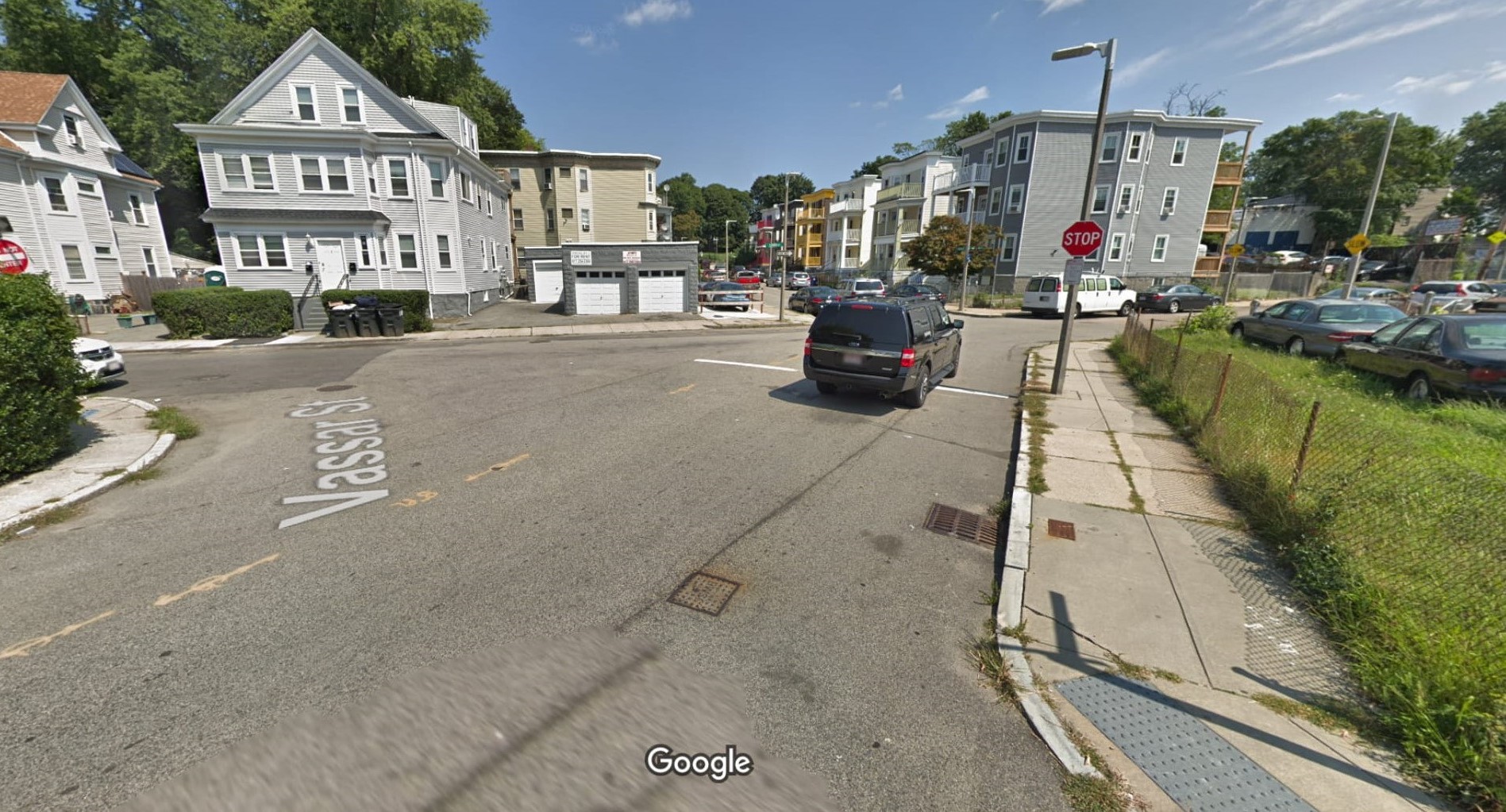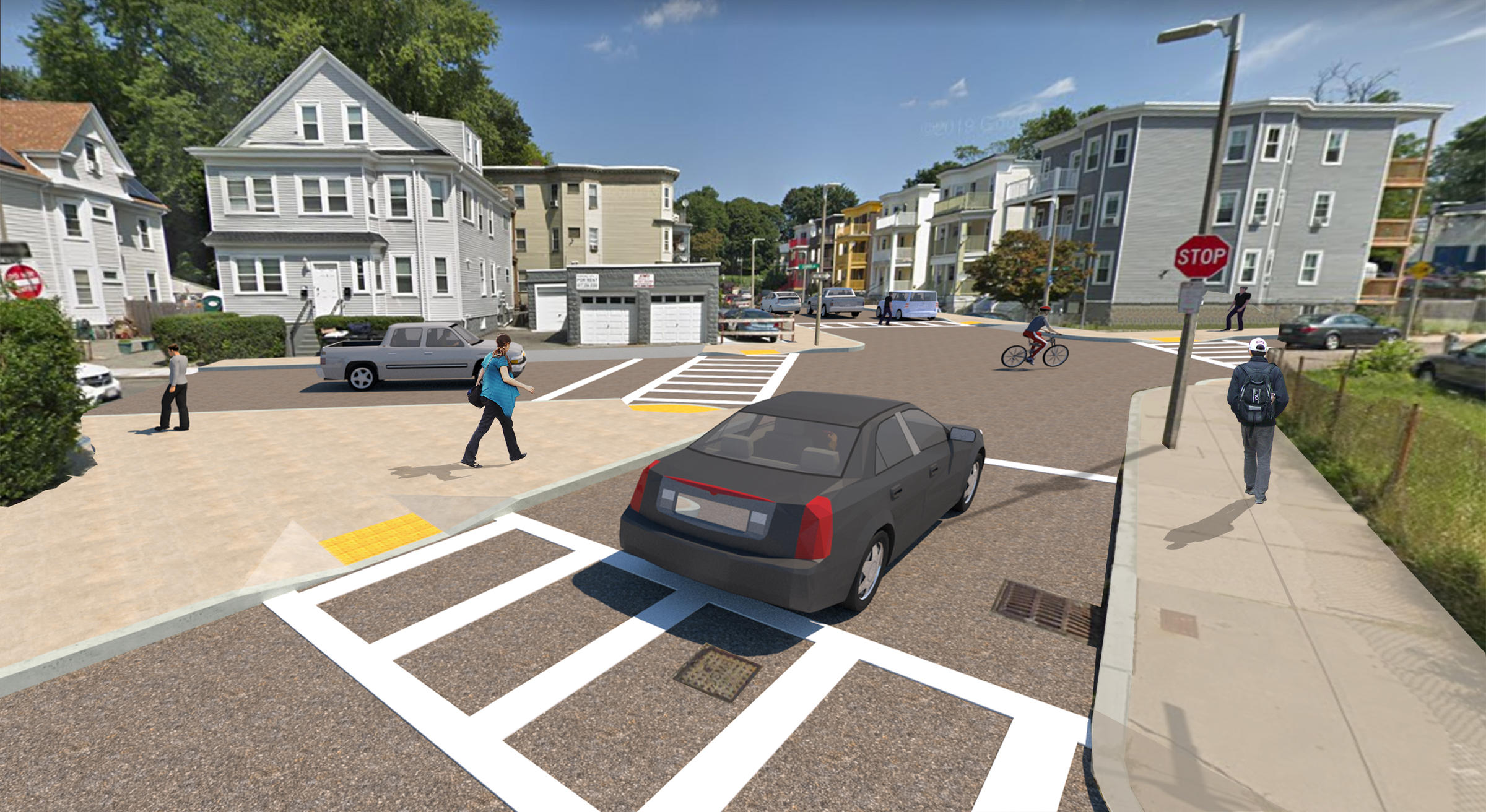Washington - Harvard - Norwell
This page contains information about the Neighborhood Slow Streets plan for the Washington - Harvard - Norwell neighborhood.
Neighborhood Slow Streets is Boston's approach to traffic calming on residential streets. We're focused on street designs that self-enforce slower speeds and safer behaviors. Through this program, we aim to:
- reduce the number and severity of crashes on residential streets
- lessen the impacts of traffic, and
- add to the quality of life in our neighborhoods.
The Washington - Harvard - Norwell neighborhood is one of five communities selected to join the program in 2018.
Construction update
Construction for your neighborhood is prioritized in 2022.
WHAT TO EXPECT WITH CONSTRUCTION:
When construction is scheduled, we will send an update to our email list for that zone. Construction crews will post "No Parking" signs at least 48 hours before any work that impacts parking.
Our Neighborhood Slow Streets program makes lasting safety improvements for our residents. Each zone's design includes reconstruction of several intersections. That's in addition to tools such as speed humps, pavement markings, and signs. Our engineered design plans have been fully approved and are ready for construction.
You can expect different construction crews for each part of the design plan. Construction schedules are weather-dependent. You can generally expect the following:
-
Speed humps: Construction may take a few days. The speed humps will have temporary paint and signage.
-
Curb extension at Carmen Street and Vassar Street: Construction may take a week or more. The intersection will be repaved. Final pavement markings will be installed no sooner than 72 hours after repaving.
-
Clear corners: Signs and pavement markings for clear corners have already been installed.
Street safety tools in this plan
Clear corners
Parking is not permitted 20 feet (about one car space) within a crosswalk or intersection to prevent obstructions to visibility. Cars parked too close to an intersection block a driver's view of approaching cars or people crossing as they prepare to turn. This raises the risk of crashes.
Speed Humps
Speed humps are placed as a series. They are spaced 200-250 feet apart to slow speeds along the entire length of a street to below 20 miles per hour. Speed humps are not installed on busy, major streets. We also don't install them on sections of streets that are hilly or curved.
Raised Crosswalk
A raised crosswalk is like a crosswalk with a speed hump. The crosswalk is the same level as the sidewalk, providing a smooth, even crossing. It's more comfortable for everyone, especially older adults, children, and people living with disabilities.
Geometry Changes
We'll can modify wide, irregular intersections to create more regular, right angle corners. Re-shaping irregular intersections will:
- reduce visibility challenges
- slow turns, and
- create a safer crosswalk.
View the Plan!
Ripley Road, Carmen Street, and Vassar Street
Residents reported visibility challenges at this three-way intersection.
Now:
The bushes at the corner of Carmen Street and Vassar Street makes it hard for drivers to see each other before reaching the intersection. This makes collisions more likely.
reshaping a safer intersection
We'll extend the sidewalks and move stop bars to a place where drivers can better see cross-traffic or people crossing the street. This will reduce the likelihood of collisions. It will also create an easier, safer, less-stressful intersection.
Project updates
Project updatesWe shared concept design plans at a public meeting on June 12 at the Aspirers Community Center at 358 Washington Street in Dorchester.
We joined community members for a neighborhood walk on Tuesday, October 16, 2018, at 4 p.m. This walk was an opportunity for community members to share their transportation-related safety concerns. We started at Harvard Street and Norwell Street and neighbors were welcome to join all or some of the walk.
The walk was not the only time or place for community members to provide input on the Neighborhood Slow Streets project. Neighbors can also share their concerns:
- on the Vision Zero Safety Concerns map
- by sending an email to visionzero@boston.gov
- by calling 617-635-4765, or
- at future community meetings.
What we learned from the walk will supplement:
- engineering observations
- data collected through speed and volume studies, and
- the information provided on the Safety Concerns map and through email and phone calls.
Zone streets* - Streets that will be evaluated for traffic calming improvements
Private ways - Streets that are privately owned, so we will not be able to make changes to them
Streets in other zones - Streets that are being evaluated for traffic calming as part of other zones
Other streets - Streets that are outside of the zone, regardless of who owns them, or streets that are within the zone boundaries and will not be evaluated for traffic calming
Open space - Parks and other open spaces
*All streets that we will consider for changes are marked as "zone streets." During the planning process, we may determine that some streets won’t see any changes. We generally will not consider any additional streets that are not marked as "zone streets."
Zone Map
Zone streets* - Streets that will be evaluated for traffic calming improvements
Private ways - Streets that are privately owned, so we will not be able to make changes to them
Streets in other zones - Streets that are being evaluated for traffic calming as part of other zones
Other streets - Streets that are outside of the zone, regardless of who owns them, or streets that are within the zone boundaries and will not be evaluated for traffic calming
Open space - Parks and other open spaces
*All streets that we will consider for changes are marked as "zone streets." During the planning process, we may determine that some streets won’t see any changes. We generally will not consider any additional streets that are not marked as "zone streets."
2018 application period
Neighborhood Slow Streets prioritizes street safety improvements in areas:
- with a history of serious crashes
- with a high number of residents more likely to be killed or seriously injured walking or biking (children, older adults, and people living with disabilities)
- that include places people may walk or bike to (schools, libraries, parks, community centers, bus stops, or transit stations), and
- near existing or planned opportunities for walking, biking, or taking transit.











